David Suzuki's Blog, page 31
August 2, 2016
Give a boo for the caribou zoo

Hey! Want more DSF? Join David Suzuki on Facebook

Give Alberta a boo for caribou

Hey! Want more DSF? Join David Suzuki on Facebook

July 28, 2016
Will growing our fuels drive us to a cleaner future?
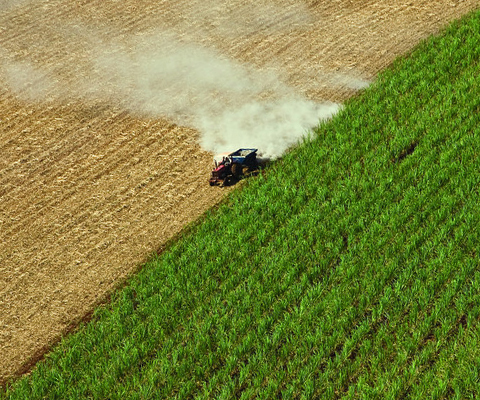
(Credit: Sweeter Alternative via Flickr)
The shift from fossil fuels to renewable energy is occurring mainly at the power plant level. But what about transportation? Can we significantly reduce greenhouse gas emissions by switching to cleaner fuels? Or is this just an attempt to keep 20th century technology chugging along while trading one set of environmental problems for another?
Biofuels aren't new and they aren't used solely for transportation. Power plants can burn wood, for example, and many of the first autos, including Ford's Model T, ran on ethanol or peanut oil. But they're now seen as an alternative to fossil fuels for transportation.
Biofuels offer several advantages over fossil fuels. Most are less toxic. Crops used to produce them can be grown quickly, so unlike coal, oil and gas that take millions of years to form, they're considered renewable. They can also be grown almost anywhere, reducing the need for infrastructure like pipelines and oil tankers and, in many areas, conflicts around scarcity and political upheaval.
The main biofuels are ethanol and biodiesel. Biomass like wood can also be burned directly for fuel, although that usually produces more greenhouse gas emissions to produce the same amount of energy as burning fossil fuels. Biofuel greenhouse gas emissions are offset to a great extent because plants absorb and store carbon dioxide while they're growing and sometimes in roots left in the ground, so CO2 emissions are roughly equal to or less than what the crops store.
Despite the advantages, numerous problems have led many to question whether biofuels are a green alternative. Andrew Steer and Craig Hanson of the World Resources Institute noted in the Guardian biofuel has three major strikes against it: "It uses land needed for food production and carbon storage, it requires large areas to generate just a small amount of fuel, and it won't typically cut greenhouse gas emissions."
Producing biofuel with crops like corn often requires converting land from food to fuel production or destroying natural ecosystems that provide valuable services, including carbon sequestration. Crops also require fertilizers, pesticides and large amounts of water, as well as machinery for planting, growing, harvesting, transporting and processing. If forests are cleared for fuel crops, and if the entire lifecycle of the fuels is taken into account, biofuels don't always reduce overall greenhouse gas emissions. Palm oil, used for biodiesel, is especially bad, because valuable carbon sinks like peat bogs and rain forests are often destroyed to grow palms.
Using better farming methods and more efficient feedstocks and growing fuel crops on land that isn't good for growing food can reduce land use and climate impacts. For example, fast-growing grasses, agricultural and forest-industry wastes, and even household wastes can be used rather than crops like corn that are normally considered food. Some feedstocks are more efficient at producing energy than others. Ethanol from canola and sugarcane is better than from corn, as it delivers more energy compared to what's required to produce the fuel.
Cellulosic materials, including switchgrass and agricultural and forestry wastes, are even more efficient than sugar- and starch-based fuel stocks. They produce fewer greenhouse gases and don't normally displace food crops, but the process of converting cellulose to ethanol is more difficult than turning starch and sugars from corn or sugarcane to fuel. Some studies show switchgrass ethanol can produce 540 per cent more energy than that required to produce the fuel, compared to just 25 per cent more for corn-based ethanol. Experimental biofuels made from biomass like algae, as well as genetically synthesized organisms, show a great deal of promise, as they're efficient and can be produced without large land bases.
Biofuels can play an important role in reducing greenhouse gas emissions, especially for applications like long-haul trucking and possibly air travel. Biodiesel and gasoline mixed with ethanol are already widely available. Research into new types of biofuels is also important, but the massive amounts of land, biomass and water required to produce conventional biofuels mean they aren't a panacea. We can get further in transportation by focusing on fuel efficiency and conservation, increased public transit and other alternatives to private automobiles, and shifting to electric vehicles, especially as clean electricity sources become more widely available.
Hey! Want more DSF? Join David Suzuki on Facebook

July 27, 2016
Bringing nature (and joy) home to the city
What's the Homegrown National Park Project?
• Thirty retired canoes relaunched as pollinator-friendly planters
• Sixty-five keen volunteer urban Park Rangers
• Thousands of milkweed plants welcoming monarch butterflies
• Musical parades, outdoor movie screenings and community events -- including Homegrown pizza night!
This award-winning project began four years ago. It aimed to transform Toronto neighbourhoods, one fun, citizen-led step at a time.
Each spring, we recruited and trained residents of neighbourhoods along the former Garrison Creek. With the support of DSF staff, these Homegrown Park Rangers gained skills and confidence. Then we set them loose. They established new pollinator-friendly spaces in their neighbourhoods. They created food- and art-filled community events that engage their neighbours. And they did it all for the sake of bees, butterflies and other essential critters.
Ranger Aidan's community canoe project landed thousands of pollinator-friendly canoe planters. Ranger Marc's rain garden project transformed 11 front yards into flood-busting rain gardens. Rangers Anjum, Georgia and Gillian helped swap pavement for pollinators along Palmerston Square. That inspired the adjacent school to hatch its own exciting greening plan. And Ranger Michael began a "butterflyway" of pollinator patches through his Cedarvale neighbourhood.
This year, the Homegrown National Park Project will focus on:
• Greening Toronto laneways
• Growing our canoe garden fleet
• Creating more butterflyways through the city
• Hosting more outdoor events -- movies, pizza nights and the fourth annual Park Crawl September 25!
For more information, check out www.davidsuzuki.org/homegrown. If you want to get involved, contact Jode Roberts at jroberts@davidsuzuki.org.
Hey! Want more DSF? Join David Suzuki on Facebook

July 26, 2016
Rockfish: Many distinct fish reduced to a single name
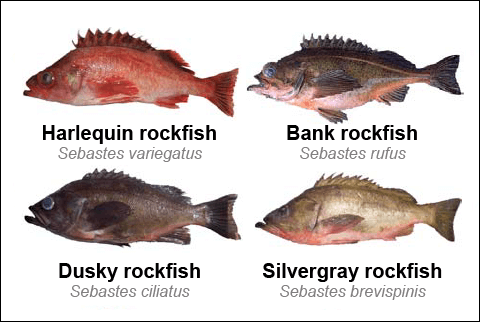
(Credit: Fisheries and Oceans Canada)
Foodies know a local place of origin makes a food item more appealing. Pemberton potatoes, Fraser Valley blueberries, Niagara grapes and Holland Marsh carrots are hot commodities at local markets and in restaurants. But when you buy fish at the market or order it at a restaurant, there's a good chance you won't know what it is.
For example, more than 100 species of fish go under the generic name "rockfish" or "snapper." These include Pacific Ocean perch, chilipepper fish, cowcod and treefish. Most belong to the genus Sebastes, which belongs to the order Scorpaeniformes -- the scorpionfishes. There are at least 34 species of rockfish in British Columbia seas alone.
Being unspecific may shortchange the value of the rockfish we eat. Sebastes are long-lived. A rougheye was recorded at 205 years old -- a Herculean survival effort in an ocean undergoing so much change.
Rockfish bottom trawling fisheries have improved. But only about one-third of the allowable harvest is caught mid-water. Four species of midwater-trawled rockfish are sustainable "Best Choice" options: yellowtail, yellowmouth, silvergray and canary. A government assessment indicates a healthy stock of yellowtail rockfish in particular.
More than 30 per cent (by volume) of seafood imported into Canada can't even be ranked and assessed for sustainability. There just isn't enough information.
The Canadian Food Inspection Agency uses only common names for fish and seafood. A single species can go by many names from ocean to plate. We'd be closer to knowing what we're eating if we required a species' scientific Latin name and/or a more specific common name.
Better reporting of seafood sustainability requires traceability, including country-of-origin labelling, country of processing, species name and harvest method on all products sold. Then you can savour that beautiful rockfish on your plate and appreciate its voyage to get to you.
Hey! Want more DSF? Join David Suzuki on Facebook

July 25, 2016
It's now or never: Strengthen Ontario's Environmental Bill of Rights

The Ontario government recently announced plans to open its Environmental Bill of Rights for review. The government also wants to know what you think about environmental rights and responsibilities more broadly, and whether the right to a healthy environment should be included in the Charter of Rights and Freedoms. Please tell the Government of Ontario that you want a strengthened Environmental Bill of Rights that recognizes your right to a healthy environment.
Hey! Want more DSF? Join David Suzuki on Facebook

July 21, 2016
Industrial damage threatens Blueberry River's way of life
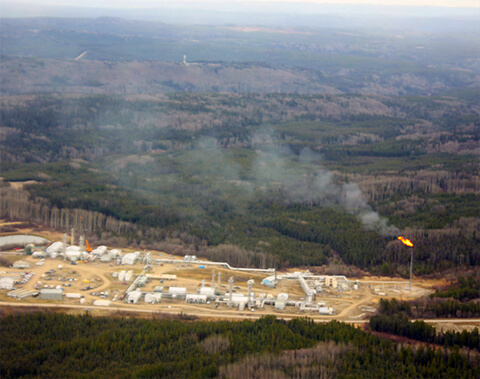
Within Blueberry River First Nations traditional territory, there are 9,435 oil and gas facilities, primarily test facilities (6,210) and battery sites (1,120).
(Photo Credit: 2016 Atlas of Cumulative Landscape Disturbance)
Industrial activity has profoundly affected the Blueberry River First Nations in northern B.C. A recent Atlas of Cumulative Landscape Disturbance, by the First Nations, the David Suzuki Foundation and Ecotrust, found 73 per cent of the area inside its traditional territory is within 250 metres of an industrial disturbance and 85 per cent is within 500 metres.
In other words, in much of the territory, which once supported healthy moose and caribou populations, it's difficult if not impossible to walk half a kilometre before hitting a road, seismic line or other industrial infrastructure. Local caribou populations are threatened with extinction mainly because of habitat disturbance caused by industrial activity and ensuing changes to predator-prey dynamics.
Scientific literature suggests that a natural functioning landscape with species including large predators requires a maximum density limit of 0.6 kilometres of linear disturbances -- roads and seismic and transmission lines -- per square kilometre. The report revealed Blueberry River has 2.88 kilometres of linear disturbance per square kilometre, totalling 110,300 kilometres -- including 45,603 kilometres of seismic lines constructed over the past 10 years, nearly eight times the length of the Trans-Canada Highway from Vancouver to Halifax.
Foundation science projects manager Rachel Plotkin recently toured the area with Chief Marvin Yahey and lands manager Norma Pyle. They showed her clearcuts in caribou calving grounds, hunting camps dissected by pipelines and giant oil-processing plants where elders once picked blueberries.
"Development has extinguished our traditional way of life on wide areas of our land," Yahey said, noting most of the damage has occurred over the past 30 years.
Plotkin said travelling across the landscape was surreal. "From far back, it looked like a forest ecosystem, though dotted with farmers' fields," she said. "But no matter which road we drove down, we saw signs of the extraordinarily high levels of industrial activity -- a pumpjack peeking from amid the trees, a sign on the road warning of a high-pressure pipeline hidden below, a sour gas flare above the treeline, a forestry clearcut, a processing plant or a pipeline riser."
As a last resort, Blueberry River First Nations brought a civil claim against the B.C. government in 2015, asserting that cumulative industrial impacts in their territory have displaced and prevented people from carrying on traditional activities assured to them by the Crown under Treaty 8.
The B.C. government responded to the report by saying it's working on a cumulative effects framework. "We recognize the importance of assessing, monitoring and managing the cumulative effects of resource development," B.C. Aboriginal Relations and Reconciliation Minister John Rustad wrote in a statement to the Dawson Creek Mirror. "Several attempts have been made to get Blueberry River First Nations involved in Northeast cumulative effects (management) programs."
This response is lacking on several levels. To start, it attempts to address an immediate ecological crisis by proposing that the community engage in ongoing, sometimes years-long processes. As Chief Yahey told the Mirror, "Despite raising these concerns directly with the premier and with provincial ministers, there has been no meaningful response to this critical threat. Instead, the province continues to approve major industrial undertakings in our territory, including major fracking operations and the Site C dam, willfully ignoring that each new approval brings our unique culture closer to extinction."
For the ministry in charge of reconciliation to respond defensively rather than open doors to better co-operation with Blueberry River is troubling. Although the government says it recognizes the importance of managing cumulative effects, the report's map of industrial activity reveals that if government has a sustainable management regime, it's broken.
The people of Blueberry River recently shared with government their Land Stewardship Framework, which outlines a path to sustainable land management, protection and restoration. What they need from government now is immediate action to protect critical areas and to be included in decision-making. Process without interim measures can be a trap -- a talk-and-frack situation.
No one should have to put up with such high levels of destructive industrial activity, especially when they aren't given a say in decisions. When governments have committed to reconciliation with First Nations they need to change their decision-making regimes and recognize that First Nations have the right and responsibility to make decisions about how their traditional territories are managed, now and into the future.
Hey! Want more DSF? Join David Suzuki on Facebook

Cycling in Toronto: A personal reflection

I'm mostly a walker and runner, not a bicycle rider, but I find myself drawn to cycling nevertheless. Why is that?
I like what it does to Toronto, my city, and appreciate the cyclist's physical presence. The steady pumping of thighs as the rider progresses up Beverley Street, up St. George, at human speed, human scale.
Smoothness is part of it. The sleekness of rider and bike. The quiet. At age 54 I am sensitive to loud sounds.
The lack of exhaust. Yesterday coming home from my jog, I found the summer night fouled by a single truck turning onto Christie. Though cyclists occasionally pass wind, they don't poison the air shed.
Bike culture is making travel safer, fostering a reduction in speed limits on many streets (just approved by city council). Lower speeds soothe the anxious and are a brake on motorized vehicles' destructive power.
Some bike lanes are demarcated by rectangular planters, a physical barrier to protect two-wheelers from four. The planters are filled with purple flowers that provide a landing spot, a habitat, for butterflies and bees. Cycling culture promotes pollinator culture.
Bike riders exude a vulnerability (not unlike that of bees) that makes them attractive. They must achieve balance, and if it is lost they fall. They move through the precarious world working to remain upright; at times they come close to succumbing to gravity.
We all have the possibility of crashing down; bikes wear this on their sleeve. Their susceptibility to failure mirrors our own. A little push can make them topple. We feel a kinship.
The automobile is too heavy to lift but the bicycle comes up easily in one hand. Imagine something so light yet robust enough to carry an adult. Bikes have the relative strength of ants.
It's exhilarating finding a non-motorized conveyance in a city full of motors. Power is almost a legal requirement today, but the bike defies this. It reminds us of the self-propelled past -- which many of us would like to taste. Bringing us to 19th century Toronto, the bike provides a brief sanctuary from modernity.
I'm drawn to cyclists' sociability; I see three riding together, talking and gesticulating as they roll -- which car drivers cannot do.
I'm drawn to cycling's simplicity. There is no ignition. There is nothing to ignite; one merely climbs on.
Because cyclists aren't enclosed -- don't sit in a box of glass and steel -- they appear accessible. A cyclist would hear me, the walker, if I called out in need.
Hey! Want more DSF? Join David Suzuki on Facebook

July 20, 2016
How to use herbs
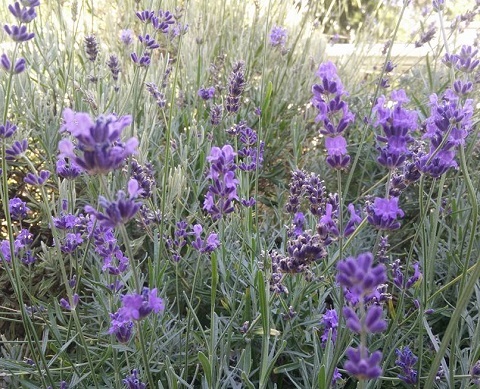
Combine one tablespoon (15 ml) each of dried chamomile, lavender and lemon to make a tea. (Credit: Lindsay Coulter)
I don't know all the uses of the herbs I grow. So I asked Rocky Mountain Soap Company herbalist Tara how to make the most of garden herbs.
What are some simple ways to use common herbs?
Herbal tea to treat fevers, headaches and anxiety:
Combine one tablespoon (15 ml) each of dried chamomile, lavender and lemon. Steep one teaspoon (15 ml) of mixture in one cup (250 ml) boiling water. Cover and steep for 10 minutes.
Also try:
Peppermint and chamomile tea for digestive issues and headaches
Rosemary and peppermint infused in oil for massage and sore muscles
Dried thyme, rosemary, mint and lavender in sachets to keep pests away (in drawers, closets or pet bedding)
Rosemary and thyme to flavour vinegars and oils for cooking or salad dressings
What are the best herbs for soap-makers?
Lavender and most seeds (milled) are good exfoliants. Calendula petals seem to stay true to colour. Rosehips add colour and texture, too.
Which backyard "weeds" are beneficial?
Chickweed is moist and nutritious. It's great in salads, teas and salves for cooling hot, dry rashes.
Dandelion root and leaf make a gentle liver tonic and diuretic. Use the root or leaf for tea. Try greens in salads, on pizzas, in stir fries or steamed. Blossoms and roots make a great medicinal massage oil or a base for an herbal salve.
I made a dandelion birthday cake for my daughter -- a big hit in early June when blooms are everywhere! Brew dandelion syrup. Mix that into the cake. Add two cups of flowers. Decorate the top of the cake with more flowers. Tastes like carrot cake!
What's the best way to preserve herbs?
Drying or tincturing.
What's the most common mistake people make when using herbs?
Some people want a one-size-fits-all approach to healing. They hope herbs will give them unending energy, great sleep and symptom relief. People must consider the source of their problems. We don't all need a detox cleanse every spring and fall. We shouldn't take all the herbs and tonics we see advertised, no matter how amazing they sound.
Share your DIY garden herb recipe in the comments below to win a prize package donated by the Rocky Mountain Soap Company. (Draw date: August 8.)
Sincerely,
Lindsay Coulter, a fellow Queen of Green
Hey! Want more DSF? Join David Suzuki on Facebook

July 18, 2016
How to choose the best herbs to grow
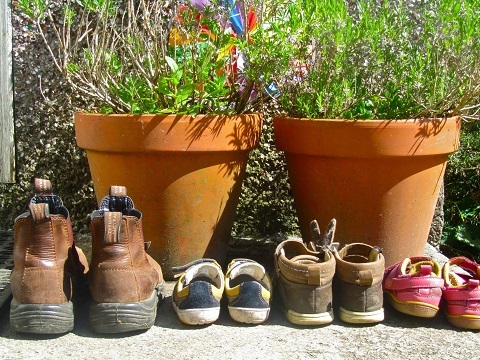
Grow chives, dill, peppermint, parsley, basil, rosemary, thyme, sage, lemon balm, cilantro and lavender in containers! (Credit: Jennifer Higgs)
My container garden varies year-to-year. But it always includes plants to help bees. Some are just for eating. And most are staples in my DIY cosmetics recipes!
Plants for DIY recipes:
Lavender -- an exfoliant in cold-process soap
Rosemary -- for shampoo (for people and pets), foot soak and mouthwash
Peppermint -- also for shampoo
I quizzed Tara, herbalist with the Rocky Mountain Soap Company (@RockyMtnSoap), for her tips and tricks:
If you could grow only one herb, what would it be?
Peppermint! It aids digestion and treats nausea and headaches. You can use it in teas, tinctures, compresses, poultices, salves, syrups and in water.
For example, combine peppermint with elder and yarrow to treat fevers. Or use as a cold tea for a compress to relive puffy or swollen eyes. (Lindsay: I've used it to treat sunburn!)
Which herbs grow best in containers?
Try chives, dill, peppermint, parsley, basil, rosemary, thyme, sage, lemon balm, cilantro and lavender.
Which herbs are easy to forage?
It depends on where you are and the time of year. Try dandelion, chickweed, fireweed, lamb's quarters, shepherd's purse, plantain, and nettle shoots or leaves. Buy a book!
Is it better to grow herbs from seed or plants?
Some herbs are easy to start from seed. Others take long to germinate and grow. Plants from seed tend to grow stronger but need more time and effort.
Try basil, borage, calendula, chervil, coriander, dill, lemon balm, parsley and sage. Before you start, always check the seed packet for germination requirements.
What else should herb growers ask of their garden stores?
Choose non-GMO and medicinal-grade seeds guaranteed to be fresh. Freshness will be better from retailers that specialize in seed sales.
Share your DIY garden herb recipe in the comments to win a Rocky Mountain Soap Company prize package. (Draw date: August 8.)
Sincerely,
Lindsay Coulter, a fellow Queen of Green
Hey! Want more DSF? Join David Suzuki on Facebook

David Suzuki's Blog
- David Suzuki's profile
- 247 followers



